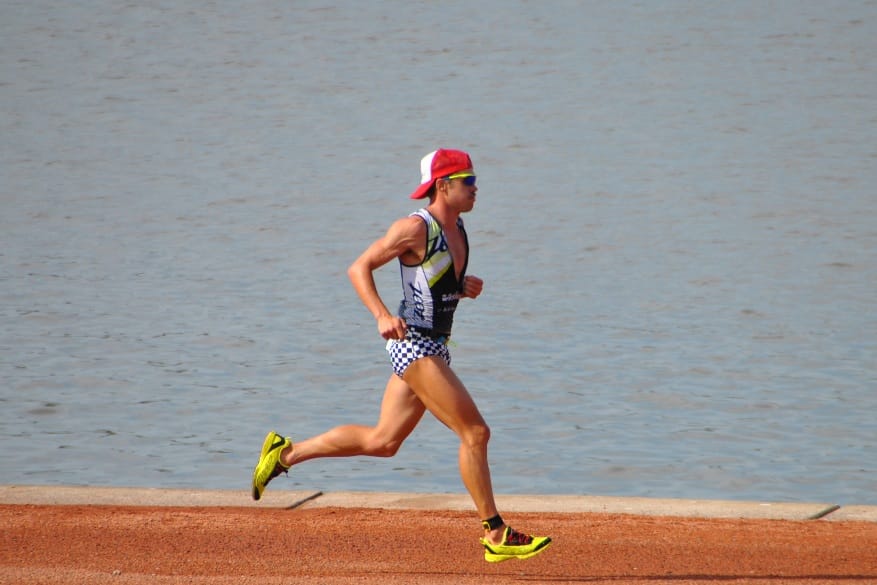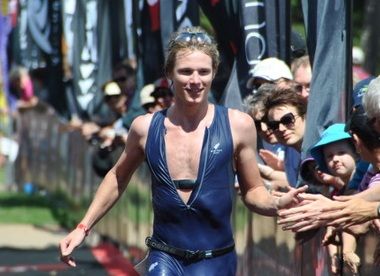Moustaches and budgy smugglers aside there are some interesting trends to think about below. I love the tech side of triathlon and gets in to the science of it all more than most.
Fat is fast
No, put down the doughnut and continue with your eating disorder, I’m talking wheel rim width. Zipp and Hed wheels broke the mould years ago using wider rim widths primarily for improved aerodynamics and in 2013 most of the other brands are following or have already followed suit, including the new and improved, high quality FSA owned Vision wheels, Bontrager, Shimano, Enve etc.
The old school narrow rim widths meant that in most cases your tyre was a lot fatter than your rim creating a disturbance in air-flow over your deep rims. For optimal aerodynamics you want your tyre width to more closely match your rim width. Innovatively, Mavic’s new wheels took this fact to a whole new level creating a system that fills the gap between the rim and the tyre. With wheel’s obesity levels at peak levels to the point that they don’t fit between some bike’s brake pads I see this as the way for further increases in race wheel speed across the brands in coming years.
As important as the aerodynamics is that a wider rim allows the use of fatter tyres. For road cycling where the surface is full of imperfections a wide tyre significantly reduces rolling resistance hence the continued move away from 21-22mm width tyres to 23-28mm.
Tyres and tyre pressure
After you’ve sold your right kidney on the black market to pay for the fastest existing TT frame perhaps you should consider spending $50-$150 on fast race tyres and learning what is the correct tyre pressure for your body weight. The latter will give you far more speed for your buck.
A supple race tyre at the correct pressure conforms more to the road surface increasing speed through greater vertical compliance. The down side of a deliciously pliable race tyre is that it’s more prone to punctures then a heavy training tyre. That’s the trade off.
The gradual realisation of the importance of tyre pressure is also seeping through the masses. Gone are the days where it was thought that you should pump your tubular race tyres up to 160psi. Ideal pressure depends on the course your racing and your body weight, ranging anywhere from 85-150psi. In general the lighter you are, the lower your optimal pressure. For example, for myself at 63-64kgs, on Port Macquarie’s neglected tarmac, would run around 90-95psi but on Busselton’s polished surface would go 10-15psi higher.
Clinchers over Tubulars
It’s no longer an argument that clincher tyres have the same if not better rolling resistance than tubulars if the clincher tyres are paired with latex inner tubes. Interestingly, now there is also some evidence that clinchers are more aerodynamic than tubulars due to their differing shape and the fact that most tubulars are still hand sewn and their individual tyre shape, even of the same tyre type can alter aerodynamics between tyres a lot. So, if clinchers are just as fast, if not faster and you don’t have to worry about all the hassle of gluing and the anxiety of puncturing your $120 tyre on a pre race spin why wouldn’t you go clinchers? World champions, Tony Martin and Sebastian Kienle seem to go ok on them.
Some very valid reasons to consider staying with tubular is that anecdotally, they do seem to be less prone to punctures and you can change a tubular much faster then a clincher in a race if it’s well rehearsed. They also are much safer should you puncture while descending and I’ve been told allow better cornering traction.
Flat Shoes with some cushioning
The minimalist shoe movement and the irritatingly outspoken barefoot converts will continue strongly in 2013. While I’m a huge advocate for people very gradually (over years) reducing their ramp height (forefoot to heel height differential) I found it frustrating that shoe companies seemed to think that a zero-6mm drop needed to be accompanied by very little cushioning. Yes, we may be more naturally suited to run barefoot however it’s unlikely we were running in a cement jungle while we were using persistence hunting’ and running for hours to slay our tucker.
Thankfully shoe companies such as Zoot and Saucony are realising this and we are seeing more natural running shoes with some cushioning such as the Zoot Ultra Kiawe (personal sponsor but I wouldn’t mention them if I didn’t love the shoe.) The traditional high heeled running shoe may never disappear given that much of the Western world is taking up running 30kgs over a safe running weight however amongst athletes we’ll continue to see more low profile shoes that promote a natural running technique without a compromise on cushioning.
Pronged Saddles
The scientific name for the area that makes contact with your saddle is called the guche. (see Urban dictionary)
Any irritation to the guche can quickly transform cycling’s enjoyment to pure torture. Enter ISM saddles, who’s two pronged attack radically changed riders pressure points off their perineal area onto their ‘sit bones’. For many riders all their guche concerned prayers had been answered. For little people like myself with 5 year old boy width hips, the problem is that the saddles caused a lot of uncomfortable thigh rub.
Thankfully, like all good ideas that make money they quickly spread with John Cobb creating a similar and seemingly much loved range and my now personal favourite, the Bontrager Hilo RXL Speed Dial (no sponsor affiliation) which allows you to adjust the width of the front of the saddle to avoid thigh rub but still keep your weight off your reproductive pipes. Look to see a lot of bikes built standard with these new styles of saddle and every other saddle brand jumping on the band-wagon over the next couple of years. The only down side to the new wave of these guche relieving saddles, is that cycling can longer be counted as a reliable form of contraception.








